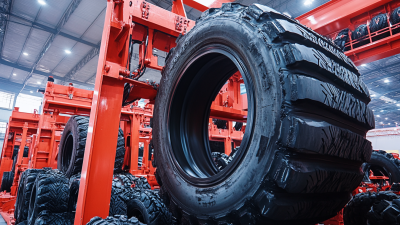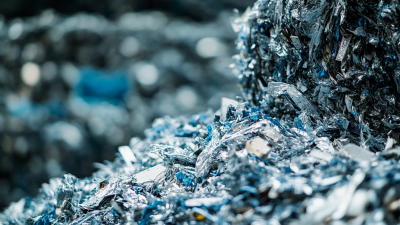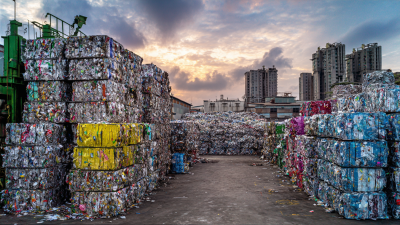 The increasing demand for sustainable recycling practices has brought the focus on innovative technologies that enhance the efficiency of waste processing. Among these technologies, the Scrap Battery Shredder plays a crucial role in the reclamation of valuable materials from spent batteries. According to a report by Grand View Research, the global e-waste management market is expected to reach USD 143.9 billion by 2028, with a significant portion attributed to battery recycling initiatives. Scrap Battery Shredders facilitate the effective disassembly of batteries, significantly improving the recovery rates of critical metals such as lithium, cobalt, and nickel—elements essential for the production of new batteries.
Furthermore, a study conducted by the International Energy Agency highlights that proper recycling of lithium-ion batteries can recover up to 95% of their components, underscoring the imperative of integrating Scrap Battery Shredders into sustainable recycling frameworks. As environmental regulations tighten and the pressure to minimize landfill waste increases, the adoption of these shredders will be paramount in creating a circular economy for battery materials.
The increasing demand for sustainable recycling practices has brought the focus on innovative technologies that enhance the efficiency of waste processing. Among these technologies, the Scrap Battery Shredder plays a crucial role in the reclamation of valuable materials from spent batteries. According to a report by Grand View Research, the global e-waste management market is expected to reach USD 143.9 billion by 2028, with a significant portion attributed to battery recycling initiatives. Scrap Battery Shredders facilitate the effective disassembly of batteries, significantly improving the recovery rates of critical metals such as lithium, cobalt, and nickel—elements essential for the production of new batteries.
Furthermore, a study conducted by the International Energy Agency highlights that proper recycling of lithium-ion batteries can recover up to 95% of their components, underscoring the imperative of integrating Scrap Battery Shredders into sustainable recycling frameworks. As environmental regulations tighten and the pressure to minimize landfill waste increases, the adoption of these shredders will be paramount in creating a circular economy for battery materials.
 Scrap battery shredders play a critical role in enhancing recycling efficiency and resource recovery, particularly as global demand for lithium-ion batteries surges. According to a 2022 report by the International Energy Agency, the recycling rate of lithium-ion batteries remains below 5%, emphasizing the urgent need for improved processing technologies. Advanced shredding systems can significantly optimize the recycling process by breaking down batteries into recyclable materials, such as lithium, cobalt, and nickel, which can be reused in new battery production.
Scrap battery shredders play a critical role in enhancing recycling efficiency and resource recovery, particularly as global demand for lithium-ion batteries surges. According to a 2022 report by the International Energy Agency, the recycling rate of lithium-ion batteries remains below 5%, emphasizing the urgent need for improved processing technologies. Advanced shredding systems can significantly optimize the recycling process by breaking down batteries into recyclable materials, such as lithium, cobalt, and nickel, which can be reused in new battery production.
Furthermore, a study by Smith & Warren Recycling Technologies indicated that integrating high-capacity shredders into recycling facilities can increase resource recovery rates by as much as 60%. By efficiently separating battery components, these shredders not only reduce the environmental impact of e-waste but also contribute to the circular economy, ensuring that valuable materials are repurposed effectively. As regulations around battery waste become stricter, investing in state-of-the-art scrap battery shredding equipment is imperative for industries aiming to meet sustainability standards while maximizing resource recovery.
The global battery waste generation has reached alarming levels, with the International Energy Agency estimating that the world produced around 250,000 tons of used batteries in 2020 alone. This trend is expected to escalate as electric vehicle adoption surges. By 2030, it is projected that the cumulative volume of spent batteries could exceed 1.3 million tons. This rapid increase not only poses severe challenges for waste management but also represents a significant environmental threat, as discarded batteries can leach harmful substances into the soil and water.
The recycling landscape for batteries must evolve to address these challenges effectively. Data indicates that currently, only about 5% of lithium-ion batteries are recycled, while the recycling rates for lead-acid batteries stand at around 96%. Innovative recycling practices, including the implementation of scrap battery shredders, play a critical role in improving these statistics. By breaking down batteries into manageable sizes, shredders enhance the recovery of valuable materials and reduce the ecological footprint associated with battery disposal. In addition to maximizing resource recovery, efficient shredding technology helps to mitigate the hazardous risks associated with battery waste, promoting a safer and more sustainable recycling ecosystem.
In the realm of hazardous material management, the role of shredding technology cannot be overstated. Scrap battery shredders play a critical part in the sustainable recycling processes by effectively minimizing the risks associated with battery disposal. By breaking down batteries into smaller, manageable pieces, shredding technology not only facilitates easier handling but also enhances the extraction of valuable materials such as lithium, cobalt, and nickel. This process not only supports resource recovery but also reduces environmental pollution by ensuring that harmful chemicals are contained and treated appropriately.
Moreover, shredding technology significantly increases safety during the recycling process. By pre-treating hazardous materials, it mitigates the dangers presented by unstable components often found in batteries. The controlled environment in which shredders operate allows for the safe segregation of toxic elements, thus preventing potential accidents or leaks. The integration of advanced shredding systems in recycling plants ultimately aligns with the broader goals of sustainability, promoting efficient waste management and a circular economy where resources are reused rather than discarded. This innovation in hazardous material management underscores the importance of adopting modern recycling practices to safeguard both human health and the environment.
This bar chart illustrates the key advantages of scrap battery shredders in sustainable recycling practices, highlighting the effectiveness in reducing toxic waste, enhancing material recovery, providing cost efficiency, improving safety, and enabling energy recovery.
Innovative techniques in scrap battery shredding play a crucial role in enhancing recycling outcomes, driving the push for sustainable battery disposal. The global shift towards renewable energy and electric vehicles has led to a significant increase in battery production, with an estimated 11 million tons of discarded batteries expected annually by 2030, according to a report from the International Energy Agency (IEA). Effective shredding processes not only facilitate the recovery of valuable materials but also ensure hazardous components are managed safely, mitigating environmental impacts.
Advanced shredding technologies incorporate features such as controlled particle size reduction and automated separation systems. For instance, recent advancements in mechanical shredders have demonstrated the ability to achieve over 95% recovery of metals, including lithium, cobalt, and nickel, crucial to the battery manufacturing supply chain. Additionally, these innovations contribute to lower operational costs and energy consumption, aligning with circular economy principles. As the demand for sustainable recycling practices grows, investing in state-of-the-art shredding equipment becomes essential for both environmental and economic reasons within the battery recycling sector.
| Technique | Description | Benefits | Environmental Impact | Efficiency (%) |
|---|---|---|---|---|
| Mechanical Shredding | Using physical force to break batteries into smaller pieces. | Increased separation of materials for recycling. | Reduces landfill waste. | 85% |
| Hydrometallurgical Processing | Chemical methods to extract valuable metals from shredded materials. | Maximizes recovery of precious metals. | Minimizes environmental pollution. | 90% |
| Eddy Current Separation | Separates non-ferrous metals from other materials using magnetic fields. | Enhances purity of recovered materials. | Lowers resource extraction needs. | 80% |
| Biotechnological Methods | Using microorganisms to recover metals from waste materials. | Eco-friendly and sustainable recovery process. | Low carbon footprint. | 75% |
| Pyrometallurgical Processing | High-temperature treatment to extract metals. | High recovery rates for specific metals. | Potential for emissions if not managed properly. | 88% |
The role of battery shredders in sustainable recycling practices is exemplified through various successful case studies. For instance, a pioneering facility in Germany has implemented advanced battery shredding technology that enables efficient extraction of valuable metals such as lithium, cobalt, and nickel from spent batteries. This operation not only enhances resource recovery but also minimizes environmental pollution associated with improper battery disposal. By converting waste into reusable materials, this facility significantly contributes to the circular economy.
Another compelling example comes from a recycling plant in the United States, which has collaborated with automotive manufacturers to streamline the recycling process of electric vehicle batteries. After integrating shredders into their operations, they reported a 30% increase in recyclable material recovery rates. The shredders facilitate the breakdown of large battery packs into manageable sizes, allowing for better sorting and processing of components. Such initiatives highlight the critical impact of battery shredders on promoting sustainable practices within the recycling industry, demonstrating their essential role in achieving environmental goals.







